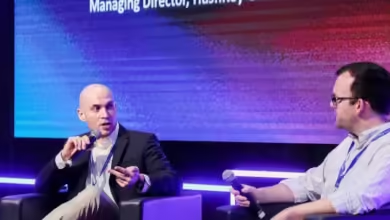The Dream of AI-Generated Videos- A Reality Check on Compute Power

The cryptocurrency realm has been buzzing with excitement lately, driven by the promise of text-to-video generation technology. OpenAI’s launch of their Sora demo sent shockwaves through the industry, and AI tokens soared in value. However, the dream of readily creating videos from simple text prompts faces a significant hurdle—the sheer amount of computing power required.
The Power Behind the Pixels
The Graphics Processing Unit (GPU) is a workhorse at the core of this. These specialized processors are like super-powered calculators, adept at handling the massive computations needed for tasks like AI and video rendering.
Here is where things get mind-boggling. Creating high-quality text-to-video content requires an incredible amount of GPU power. A recent study by Factorial Funds suggests that supporting a vast creator community on platforms like YouTube and TikTok would require an incredible 720,000 high-end Nvidia H100 GPUs.
Training vs. Inference- A Power Divide
Understanding the difference between training and inference is vital. Training involves feeding an AI model a massive dataset of text and video pairs, essentially teaching it how to generate new videos based on text descriptions. This process is incredibly resource-intensive and requires a significant amount of GPU power for an extended period.
Inference, on the other hand, refers to the actual generation of videos after the model has been trained. While it requires less power than training, it is still substantial. Research suggests a single GPU can only generate around 5 minutes of video per hour, stressing the ongoing need for processing power even after the initial training phase.
The Power Gap Compared to Other AI Applications
The sheer amount of power demanded by a text-to-video generation far surpasses what other AI applications like GPT4 (large language models) or still image generation require. This highlights the unique computational intensity of creating high-quality, dynamic video content from scratch.
Even if we had the financial resources, acquiring the necessary GPUs presents a logistical challenge. In 2023, Nvidia, the leading producer, shipped only 550,000 H100 GPUs. Considering the combined holdings of major tech companies (around 650,000 GPUs), there is a significant gap between what is needed and what is readily available.
The Financial Barrier- A Staggering Cost
The financial implications are equally daunting. At an estimated price tag of $30,000 per GPU, creating a mainstream text-to-video ecosystem would require a whopping $21.6 billion! This is almost equivalent to the current market capitalization of AI tokens.
Exploring Alternative Solutions
While Nvidia dominates the AI chip market, other options exist. AMD offers competitive products, and cloud-based solutions like Render (RNDR) and Akash Network (AKT) provide distributed GPU computing power. However, there is a catch- these networks primarily rely on less powerful consumer-grade GPUs, not the high-end beasts needed for large-scale text-to-video generation.
A Glimpse into the Future- Overcoming the Hurdles
The potential of text-to-video generation is undeniable. It could revolutionize video production across various industries, from marketing and education to filmmaking and entertainment. However, the current hardware limitations pose a significant challenge.
Here are some solutions to consider:
Advancements in Chip Technology– The development of more powerful and efficient GPUs specifically designed for AI applications could significantly reduce the computational burden.
Cloud-Based Solutions with High-End GPUs– Cloud platforms offering high-end GPUs as a service could provide creators with access to the necessary resources without the massive upfront investment.
Software Optimizations- Developers could focus on optimizing text-to-video generation algorithms to make them more efficient and require less processing power.
The industry continues its quest for more powerful and accessible computing resources. As these hurdles are overcome, the dream of easily creating videos from text descriptions might finally become a reality.
https://finance.yahoo.com/news/crypto-ai-projects-buy-chips-093557008.html





